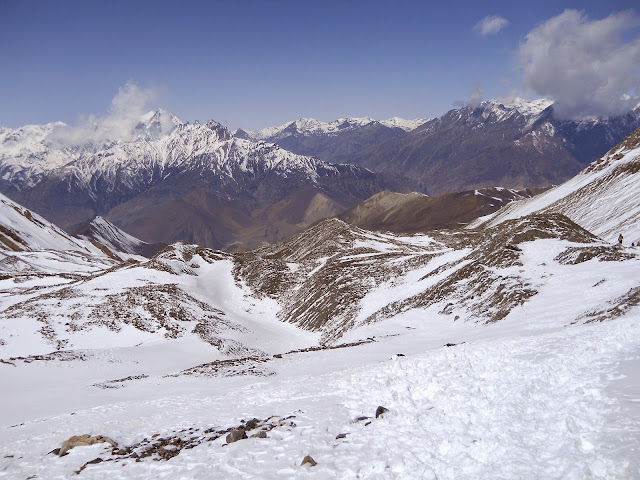Did this amazing Annapurna Base Camp (ABC) trek during the last week of December 2013 with an unforgettable x-mas celebration in the remote village of Sinua with khukri rum and timely returned back to Pokhara for new year 2014 celebration.
The trek started on 22nd Dec after leaving Pokhara around 2 p.m. from Baglung Bus park towards Nayapul. We arrived Nayapul around 6 p.m. We stayed in one small Lama Lodge there. Left to ABC earlier in the morning. Passing Birethanti (first ABC check post for tourist), Syauli Bazaar (1190 m), Kliu (1390 m), Kimche (1760 m) and beautiful Ghandruk village (2000 m), we reached Kimrong Danda around 6 p.m. on that day. We had the best insight into the Nepalese village lifestyle, ethnic diversity and a moderate adventure even on our just first day walk. More you walk up more you will come across the several viewpoints with world famous Himalayan views. During the day, we had a lunch in Kimche. We had a very hospitable service from an old lady in one guest house in Kimrong. We were treated like family there.
Next day we left Kimrong Danda around 7 a.m after experiencing a breathtaking sunrise view over the Mt. Annapurna and Mt. Fishtail, that was just amazing... After light breakfast there, We headed towards Chhomrong (2170 m), yet another stunning place in our trek and finally reached Sinua village (2340 m) around 5 on our second day walk. We had a lunch at Chhomrong on that day. Chhomrong is a large Gurung village at the corridor of Annapurna Sanctuary. The village offers the upclose view of Mt. Annapurna South (7,219 m), Mt. Machhapuchhre ( also called Fishtail at 6,993 m). We stayed that night in Sinua after seeing the beautiful late sun over the mountains from Sinua. Celebrated x-mas with nepalese rum, Khukri rum.
Next morning after having a light breakfast we left Sinua at 7 a.m. We passed Bamboo (2190 m), Dovan (2505 m), Himalaya (2873 m) and finally reached Deurali (3231m) at 5 p.m to spend our night there.
Next day, left Deurali at 7 a.m. Passed a spectacular MBC (Machhapuchhre Base Camp, 3703 m). At MBC, valley opens up wide and bright with marvellous view of Mt Machhapuchhre and Mt. Annapurna I (8,091m ). We We had a lunch at MBC then headed towards ABC (4130 m). On the way to ABC from MBC, the vegetation disappears. We saw snow boulders melting and forming small streams. The trail to Annapurna base camp climbs gradually to the snowfield and the the edge of glacier. At ABC, we are at the base of world's highest mountains surrounding us in 360 degree. After arrival at this view site, we did savor the mesmerizing views of the Machhapuchhre, Annapurna south, Annapurna I, Hiunchuli and other peaks. We spent the night in one lodge at ABC with a little breathing difficulty while sleeping, that was because of the high altitude.
We did relish the magnificent sunrise over the Himalayas from ABC. After breakfast, we spent like 3 hours there then only started descending from ABC to Bamboo back through Machhapuchhre Base Camp, Deurali, and Dovan until we finally reach Bamboo. But unfortunately we didn't any room available for us during that night, so we headed even down hill to reach Sinua around 8 p.m. Had a different experience of walking in the night with torch light. Climbing back down to the valley is much easier than climbing up.
Next day, we followed the same trail that we took to climb up till Chhomrong. Climbed down steeply on the stone steps to the village of Jhinu. We settled into one lodge, left our baggage and then headed down half an hour to natural hot spring pool in the shore of Modi river. Enjoyed the natural hot spring there, such a wonderful relaxing moment there..Then we moved up back to the lodge and enjoyed our lunch then headed towards New Bridge and finally reached Himalpani to spend our last night in the mountain. There was one very huge and beautiful waterfall.
Next morning, after having breakfast we left Himalpani and headed towards Australian Camp at Pothana by passing Landruk and Tolka. We spent a night at Australian camp.
Earlier next morning had a completely different view of sunrise there. After having breakfast we then headed towards Dhampus and Phedi and finally took a bus back to Pokhara. Thats how we ended our trek in nine days and we were in Pokhara to celebrate new year 2014.












































